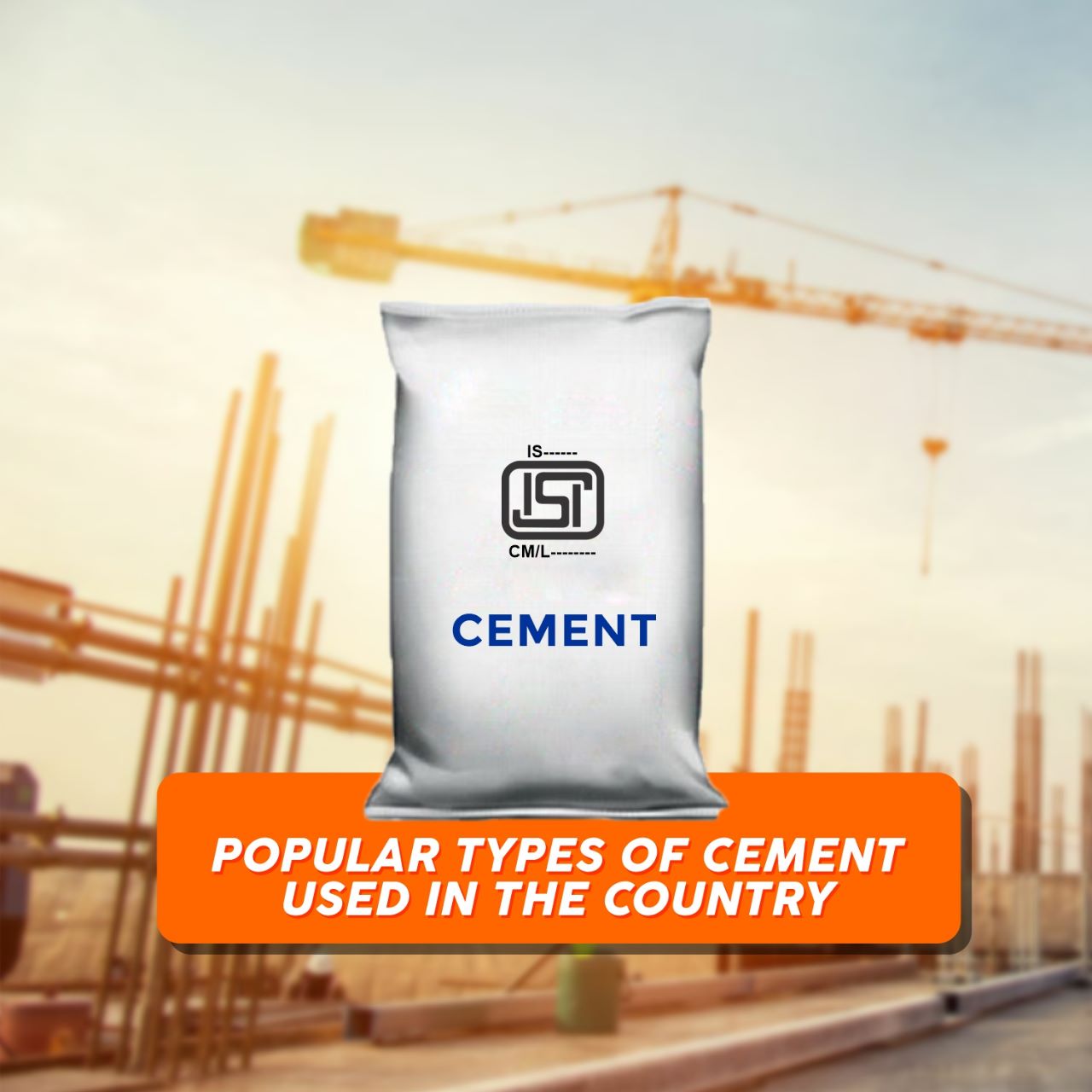

A vast majority of the structures we see around us are constructed from cement concrete, as it is one of the most versatile construction materials available. The unique properties of cement facilitate it in being an ideal binding material for the production of concrete. India is the second largest manufacturer of cement, surpassed only by China. India produces around 25,000 tonnes of cement every year.
Cement can be of various types like ordinary Portland cement, Portland pozzolana Cement, Portland slag cement, white cement, rapid hardening cement etc., based on their requirement. Presently, we have Indian standards on 15 varieties of hydraulic cement. Some of the commonly used varieties of cement are as follows:
a) Ordinary Portland Cement (OPC) as per IS 269 : 2015
OPC may be classified into 3 types based on strength, OPC 33, OPC 43 and OPC 53 and 2 more types for sleepers, OPC 43S and OPC 53S. OPC is generally used for reinforced concrete buildings, bridges, pavements, and where soil conditions are normal. It is commonly used in brickwork, concreting, plastering, etc. Strength and durability are the essential requirements which are addressed in this standard apart from packing, best before date and retesting guidelines.
b) Fly ash-based Portland Pozzolana cement (PPC) as per IS 1489 (Part 1):2015
Portland pozzolana cement may of 2 types, fly ash-based and calcined clay based. Fly ash-based pozzolana cement is more commonly used. PPC is manufactured using industrial by-products like fly ash and is hence more environment-friendly. It releases comparatively lower heat during its setting and is hence ideal for large constructing hydraulic structures like dams, bridges over a river, underwater structures and areas near the sea, etc. This standard covers the manufacture and chemical and physical requirements of fly ash-based pozzolana cement.
c) Portland slag cement as per IS 455:2015
Portland slag cement (PSC) is made by combining industrial by-product slag with normal cement, and is more environment-friendly. PSC cement is used in marine construction projects as it resists chlorides, sulphate-containing water, alkali metals, acidic seas, etc. It is used in large-scale concreting operations like the construction of dams as it has a low heat of hydration. Portland slag cement can be applied to large-scale concrete that may be used for concrete in hot climates. This standard gives the physical and chemical requirements of PSC.
d) White cement as per IS 8042:2015
White cement is a special kind of cement used for its aesthetic appeal. While usual types of cements have a grey colour, white cement is produced in a special way to ensure it remains white. It is used in historic or iconic buildings mostly but is not limited to cladding or plastering work. It may be used for making coloured concrete as well, which is again widely used by architects for finishing work in structures. This standard gives the physical and chemical requirements of white cement.
As per Indian standards, the cement should be packed to avoid any ingress of moisture in the bag. Since the quality of cement will deteriorate with the possible ingress of moisture, it is necessary to mention on the cement bags that they are best before three months of manufacture and that they should be retested if used beyond that period.
The Cement (Quality Control) Order, 2003 restricts the manufacture, store for sale, sale or distribution of cement which does not conform to the Specified Standard and which does not bear the Standard Mark. As per this order, only ISI-marked cement is allowed to be sold in the market. This ensures that the cement available in the market meets the minimum requirements of strength and durability set by the Indian standard. Imported cement from overseas is also subject to the same standard of quality and Quality control order as Indian cement.